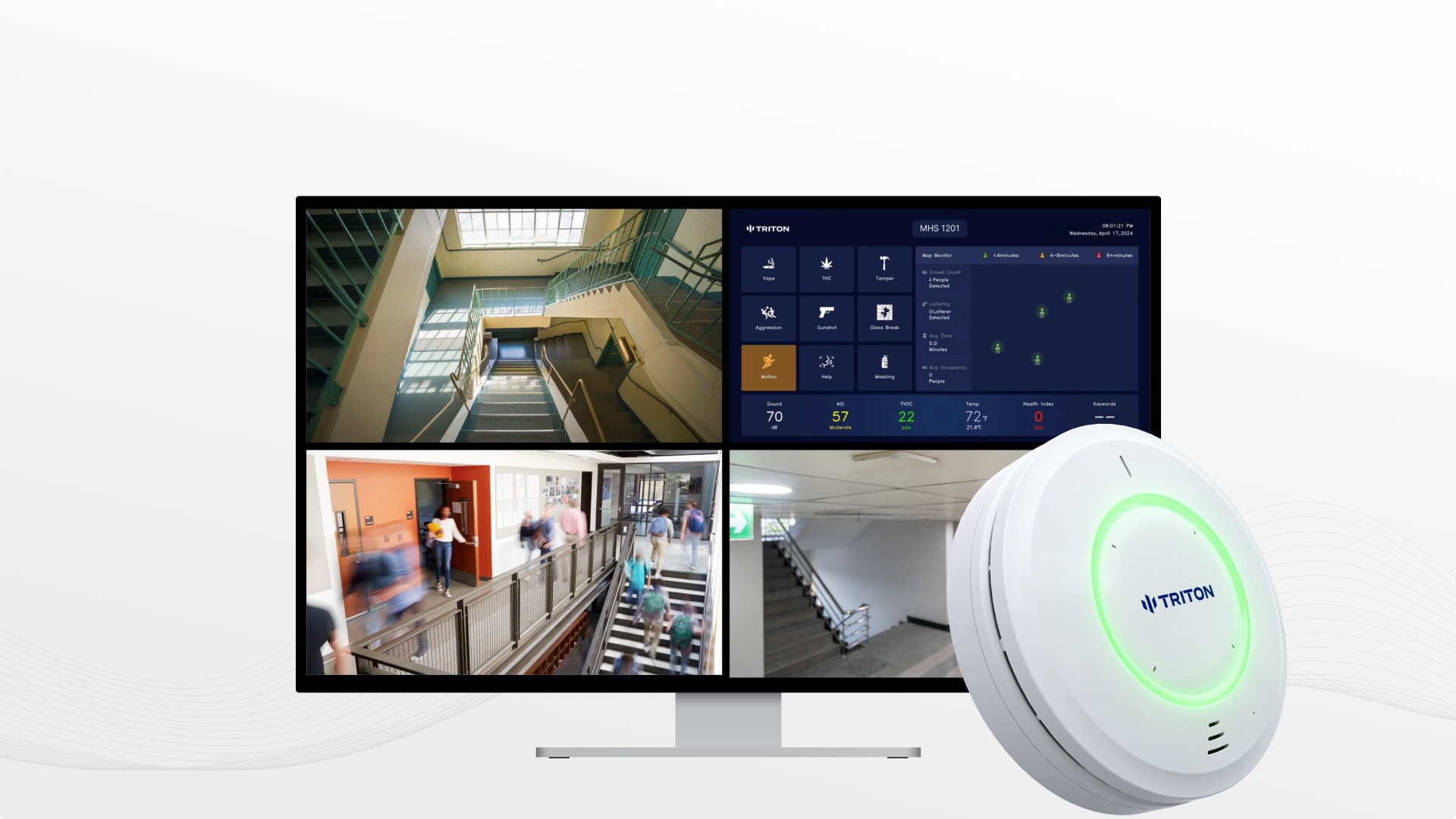The problem of smoking in schools has grown into a silent epidemic, with students discreetly using electronic cigarettes in restrooms and secluded corners, jeopardizing health and safety concerns. In order to combat this schools have resorted to vape detectors as a means to regain control. They are advanced and discreet, but they also give them the ability to maintain complete control. In this regard, Triton Sensors’ vape detectors for schools stand out as an example of creativity by blending privacy, accuracy, and multi-threat detection to provide safer learning environments.

Image credit: tritonsensors.com
The Triton vape smoke detector unlike traditional smoke alarms, is specifically designed to recognize the distinctive chemical signatures that are found in nicotine and THC aerosols. This eliminates false positives due to steam or other benign particles. This level of accuracy is crucial in schools with a high volume of students where disruptions are minimized. Vape detectors go beyond smoking, and can detect loitering in the crowd, a verbal assault or even serious threats like gunshots. These devices are backed by a 10 year warranty and have a long life. They’re a good choice for schools on tight budgets.
What sets vape detectors for schools apart is their capability to turn an ineffective discipline into proactive prevention. The sensors operate 24/7, and are able to monitor areas of high risk, such as bathrooms and locker rooms, sending immediate alerts to school administrators through an app on mobile when problems occur. This feature is real-time and allows schools to take action promptly and avoid situations getting worse. Triton information reveals a shocking real-world scenario: Every three minutes, students smoke. This underscores the importance of this technology.
A standout feature of vape detector is its privacy-respecting occupancy monitoring. It monitors crowds, loitering and swarming without cameras or microphones. This means that students’ privacy is respected. Triton Cloud Dashboard gives schools access to intuitive visualizations, that help them spot problems without appearing intrusive. This is particularly helpful in environments where oversight can be complicated, as it helps to ensure safety while respecting the boundaries.
Dashboard’s hotspots analysis goes further, mapping out where and when incidents are at their highest. This method of analysis based on data lets schools enhance their response with the efficient use of personnel and resources. Triton’s tools for reporting collect evidence of vaping activities and allow administrators to provide school board members and parents with clear and quantifiable information. Vape detectors used in schools reveal dramatic drops in vaping after just five weeks. The system’s intelligence and deterrent impact is evident.
The Vape Smoke Detector is an all-purpose guardian which also solves safety issues. It aids schools in preventing behavioral problems by detecting phrases that may be associated with aggression or bullying. The ability to detect gunshots is an essential level of protection in an era of heightened security concerns. This holistic approach ensures that schools aren’t simply tackling smoking, they’re creating security nets.
Affordability remains a cornerstone of Triton’s appeal. The price is reasonably priced despite its high-end features. It’s an economical option for include additional staff in the school, or to implement an intrusive surveillance system. With fewer incidents of vaping and related incidents occur the long-term advantages are.
While the rise of vaping continues to threaten schools, vape detectors offer an indication of the future. They are an amalgamation of the latest technology and a commitment to protecting privacy. They allow educators to concentrate on teaching and not policing. The Triton vape detectors redefine what it means to be in an environment for education that is safe. They address not only vaping, but also loitering and violent behavior. These sensors are designed to aid schools stay on top of the ever-changing dangers.
